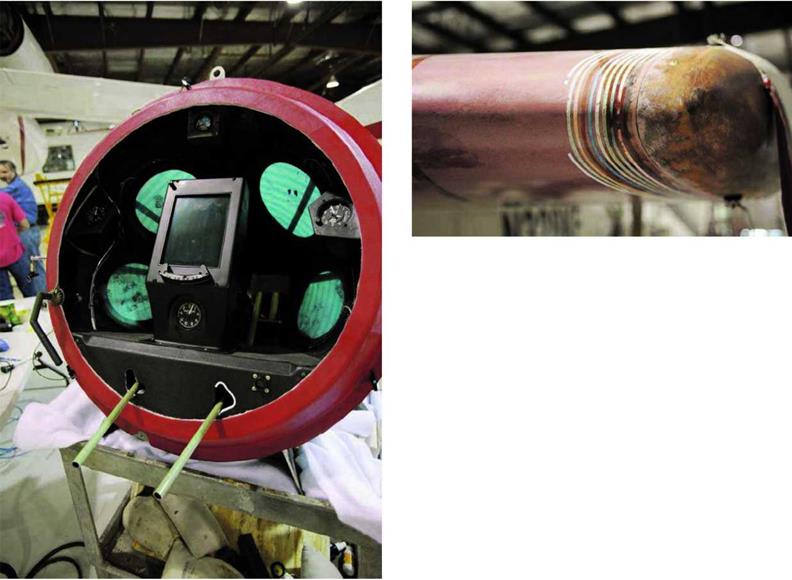Thermal and Radiation Protection
Because SpaceShipOne slowed down so quickly, it did not experience extreme temperatures very long. Therefore, thermal loads were much smaller than those faced by the Space Shuttle. SpaceShipOne required only a relatively simple thermal protection system (TPS). Its TPS design consisted of two main parts.
The first part was built in during the manufacture of the composites. When the composite skins for the areas that would experience high temperatures during reentry were constructed, instead of
epoxy, a phenolic resin was used with the carbon fiber. The temperature tolerance for these composites increased by 50 to 70 degrees Fahrenheit.
About 14 pounds (6.4 kilograms) of an approximately 0.035-inch – (0.09-centimeter-) thick ablative coating developed by Scaled Composites was added to 25 percent of the surface of SpaceShipOne as the second part of the TPS. Ablative coatings made of reinforced plastic have been around since the early space program. The ablative process reduces the temperature of a spacecraft’s surface that faces the airstream on reentry by absorbing some of the heat that is generated. The heat absorbed causes the ablative coating to burn free of the spacecraft, so, in effect, the coating carries away a portion of the heat when it flies off the spacecraft.
When the ablative coating burns, it undergoes a chemical reaction. The heat provides the energy needed for this chemical reaction to

 г ^
г ^
Fig. 4.20. Wax stripes were added to the various surfaces exposed to heating during reentry. These surfaces already had a red-colored coating that was part of the thermal protection system (TPS). Each colored wax stripe on the right wingtip, as shown here, melted at a different temperature. By studying the remaining wax after a flight, engineers could determine a heating profile. Mojave Aerospace Ventures LLC, photograph by David M. Moore
V_____________________________________ J
occur. Therefore, the heat absorbed during the ablation process is heat that is no longer available to heat up SpaceShipOne. The ablative coating is then reapplied for the next spaceflight. Figure 4.20 shows the temperature effects on a wingtip and its colored wax test stripes.
Even in the worst-case scenario where the TPS was completely gone, the fuselage could have withstood the damage and returned the crew unharmed. Because of the short duration and relatively low altitude of the spaceflight, SpaceShipOne was not equipped with radiation shielding.










